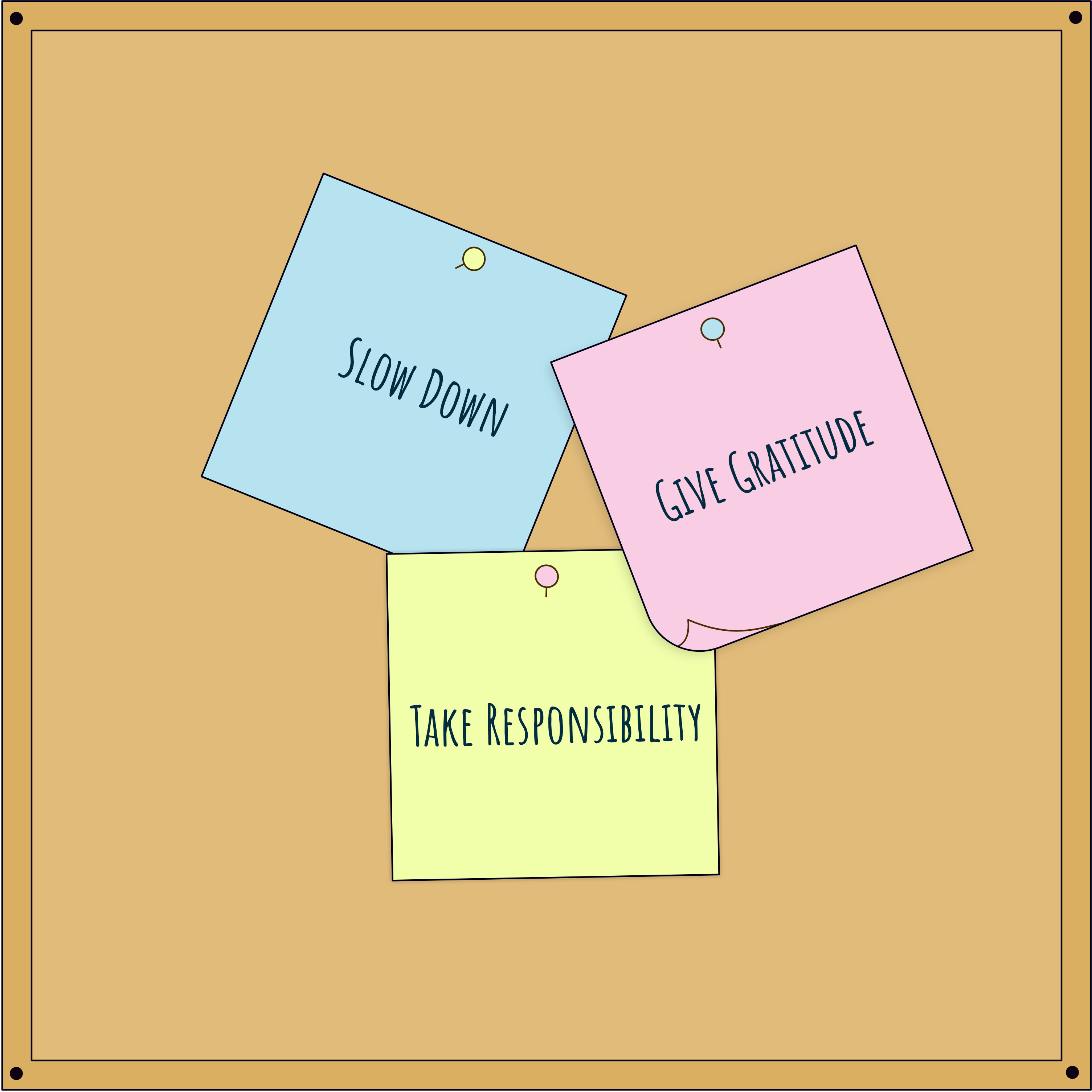
10 Ways To Be Intentional Every Day
Welcome friend. If you’re reading this right now, it must mean you’re interested or curious about being intentional. Does it feel
Being intentional will
wondering what you’re doing with your life and wanting a sense of direction? Do you find yourself
You’re finding it hard to connect with your family
Do you wish you didn’t easily get angry at people or situations? Do you wish you were kinder and more confident or anxious
If so, you’re not alone. I walked that path for many years …
Being intentional makes you….
So how did we learn to be intentional.
This all changed for us when Nigeria went into lockdown in 2020.
We had just moved into our new studio nine months before lockdown happened and we were pretty keen to redesign our walkway into a botanical garden. This was the perfect opportunity because everyone was expected to sit at home, so we did what many others did – we gardened…and gardened for hours every day. The process of constant gardening brought us closer to nature and taught us a lot about plants. As we took care of our plants, we began to see lessons in every moment. These lessons began to show up in our personal and business lives. More accurately, we became more aware of them.
We had an intention to keep all our plants alive and the act of living up to that intention taught us about the fundamental steps to becoming intentional. Over time, we noticed that we could sum the lessons we learnt into three actionable steps that helped us become a lot more intentional. These steps were to:
1. Slow down
2. Give gratitude
3. Take responsibility.
Let’s take it step-by-step.
The Fundamentals Steps to Becoming Intentional
Slow Down
Have you ever taken care of a plant? If you haven’t, you should get one (link to Ekondo). When taking care of plants, you’ll find that you have to slow down to watch them. You’ll have to be observant and watch out for if they’re doing well. Are their leaves wilting or browning? Are they getting enough sunlight? Water? Nutrients? Wait…Are those aphids sucking the life out of them or caterpillars eating their leaves for breakfast? The only way to answer these questions is to be present…to be in the moment.
Another way our plants got us to be present is simply by being…present. They can often seem like they’re not moving, growing, or progressing. Have you ever waited for a flower to bloom or for a new leaf to sprout from your plant? It can feel like forever! Plants grow at their own pace and not the pace that we desire. One day they seem to be making no progress, then suddenly they blossom. They appear slow but they make consistent progress. All you need is a picture of a plant before and after a week to see that it’s grown. Its growth might not be obvious to you in the moment, but there’s no doubt it’s growing.
We could see the parallels in how we designed. Slowing down to be present made us better designers. The more we slow down, the more we become present and the better we get at observing. If you can slow down enough to notice details on plants, you’ve honed your ability to notice things many people glance over. The ability to slow down and boosted our creativity
This also applies to the design of our lives. The better we get at observing, the better we get at seeing ourselves – then others. We tend to compare ourselves to others. This means we spend a lot of time focused on others, but not on ourselves. It’s hard to be intentional about your life when you’re focused on that of others. However, once you’re focused on yourself, you’ll see where your strengths lie and how you can use them to grow.
Once we learn to slow down and focus on consistently growing, we’ll discover that growth is in different paces.
Slowing down comes in multiple ways and is contextual, however it helps to practice all forms of it. Here are ways of slowing down that are helpful.
- Meditation
- Praying
- Breathwork
- Reflecting
- Journaling
- Writing
- Exercising
- Gardening
- Taking walks
- Immersing oneself in nature
- Saying no
Give Gratitude
Here’s what starts to happen when we learn to slow down and be more present, we being to notice and find beauty in all the little things that seemed mundane. This made it easier for us to see the different areas of life we could be grateful for.
There are layers of gratitude which we must all access. The first is gratitude to God, Life, nature, energy – the higher powers that are the reasons we exist. If you’re not grateful to be alive, it’s pretty difficult to be grateful for anything else.
The second is gratitude to the energy that you are. We’re usually tempted to compare ourselves to others and focus on what others have that we don’t have. This leads to envy, jealousy, and greed, which stop us from growing. When we choose instead to focus on ourselves and start observing our abilities, skills, achievements and potentials, we see that there are reasons to love ourselves.
Another lesson on gratitude that plants taught us was the importance of starting with what we have. We noticed that our plants adjusted to where we placed them. If they were in a large bed of soil, they grew proportionate to that bed of soil. If they were in a cup, they grew proportionate to the amount of soil in the cup. They were grateful for what they had. The lesson was clear – don’t let the excuse that you don’t have as much privilege as others hold you back from being thankful for what you have. You have yourself – start there.
Loving ourselves and finding what we’re thankful for about ourselves is a necessary first step to genuinely achieving the next step of giving gratitude to others. It’s easier to practice giving gratitude to others when we’ve practiced it with ourselves first. We can only give what we have, right? We started getting better at slowing down to see what we appreciated about others and made the effort to be expressive about it. When we can express our gratitude to others, it gives them energy and helps them do better.
Watching our plants grow everyday filled us with a profound sense of gratitude. We began to look forward to everyday irrespective of the challenges that came with keeping these plants alive. This taught us a profound lesson about finding what to be grateful for in all scenarios. It taught us that that in every moment there are blessings and lessons. Being present and finding what to be grateful for helps us see the blessings in life that we might otherwise miss. It helped us see the lessons that life leaves us in every moment – especially in the difficult moments. When our plants died, we mourned their loss but gave gratitude for the lessons we learned. Some plants needed more sunlight. Others needed less water than we gave them. Every loss we had meant we learnt a lesson on how to take better care of plants.
We had to learn to approach all events in life with a similar mindset of gratitude. This mindset immensely helped us when in July 2020, our grandmother who raised us passed away. We had to find gratitude in the time that we spent with her and the lessons we learnt from her. It’s easy to assume that everything lasts forever, but the best way to show gratitude for anything is to take responsibility for it.
Practical ways of giving gratitude:
- Keep a gratitude journal
- Practice affirmation
- Compliment others
- Start with gratitude when giving feedback
- Gratitude challenge: find something to be grateful for – especially when there doesn’t seem to be anything
- Take a gratitude meditation session
Take Responsibility
Everyday, we had to ensure our plants had sufficient water, good soil, and sufficient sunlight. Doing this exercised our sense of responsibility. We were grateful for our plants and when you’re grateful for anything, you work hard to ensure it keeps existing. Taking responsibility for what makes you happy and brings you value is the highest form of gratitude.
Here’s why this is key to intention. Taking responsibility is how you and whatever you’re grateful for improves. It’s how you make use of the blessing and lessons you find in every moment. If I gave you a seed and you forgot it in your pocket instead of planting it, you’ve misused the gift. That’s the same way life is constantly leaving us with gifts that we need to take responsibility for.
Sometimes these gifts don’t come as obvious gifts. Instead, they come in form of tribulations and trials. They come in ways that we might not like. However, if we begin with finding what to be grateful for in these moments and taking responsibility, the true gift reveals itself. You’ll only experience growth in your life when you’ve learned to consistently take responsibility.
If you’re really grateful for your life, then show it by taking responsibility for it. If you’re really grateful for yourself, then show it by taking responsibility for yourself. If you’re really grateful for your loved ones, then show it by taking responsibility for helping them grow. And if you can find gratitude in every moment, then you can take responsibility for doing what helps you level up in every situation. When you take responsibility in every moment, it empowers you to create the reality you want to see.
Taking responsibility involves asking:
- What is my next step?
- What is my role in this?
- What could I have done better?
The Cycle of Intention
When you observe nature, you’ll see that a lot that happens in nature takes place in cycles. There’s death and life. There are seasons that lead to the next and rely on each other. Without spring, it’s impossible to have summer. Likewise, it’s immensely difficult to find what to be grateful for and express it if you’ve not learned to slow down and be present. If you can’t see it, then you can’t be thankful for it. However, as long as you start by slowing down, it’s easy to see what you should be grateful for and where you need to take responsibility. You can choose to take responsibility by slowing down, or slow down to take responsibility, or give gratitude to make sense of what to take responsibility for. Ultimately, it’s a cycle that must begin with slowing down and being present enough to evaluate and confirm what you wish to see; giving gratitude for life and what you have; and taking responsibility for that future you wish to see.


